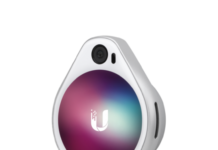In recent years, drone aerial survey has revolutionized industries worldwide. Traditionally, ground-based surveys were time-consuming and labor-intensive, but with the integration of drones, the process has become faster, more accurate, and cost-effective. Drone surveys now play a crucial role in industries such as construction, agriculture, mining, and environmental monitoring. These aerial devices have unlocked a new realm of possibilities, offering comprehensive overviews of landscapes that previously required much more effort to survey.
How Does Drone Aerial Survey Work?
Drone survey utilize unmanned aerial vehicles (UAVs) equipped with high-resolution cameras, GPS, and various sensors to capture detailed imagery and data from above. These drones fly over specified areas, taking precise measurements and capturing images that can be processed into 3D maps, orthomosaics, and elevation models. Unlike traditional methods that involve physically traversing difficult terrain, drones cover large areas quickly and safely. The captured data is then analyzed to provide insights into land topography, vegetation health, and structural integrity, making drone aerial surveys a cutting-edge tool for many applications.
Benefits of Drone Surveys Over Traditional Methods
One of the most significant advantages of drone surveys is the sheer efficiency they offer. In a matter of hours, drones can gather data that would take a team of surveyors days, or even weeks, to collect. Furthermore, drone aerial surveys minimize the risk of human error. With GPS and automated flight paths, drones can repeat surveys with precision, ensuring consistency in data collection. In addition, these surveys allow access to areas that are otherwise difficult or dangerous for humans to reach, such as steep slopes or hazardous industrial zones. The use of drones not only increases efficiency but also improves safety standards across various industries.
Applications of Drone Aerial Surveys
Drone aerial surveys are highly versatile and are used across a range of sectors. In construction, they assist with site planning, progress tracking, and volume calculations for materials. In agriculture, drone surveys provide essential insights into crop health by capturing multispectral images that detect diseases or nutrient deficiencies. The mining industry relies on drones for topographic surveys and monitoring of excavation sites, reducing the need for ground-based surveying teams. Environmental organizations also benefit from drone surveys, using them to track deforestation, monitor wildlife habitats, and assess the impact of climate change. The versatility of drone surveys has made them a vital tool in modern-day data collection and analysis.
Precision Mapping and Data Accuracy
Drone surveys offer unparalleled precision when it comes to mapping and data accuracy. With the ability to capture high-resolution images from multiple angles, drones provide detailed topographic maps that can be used for terrain modeling, land-use planning, and infrastructure development. These images can be processed into 3D models, which help engineers and architects visualize projects before construction begins. The precision provided by drones ensures that all measurements are accurate to within a few centimeters, significantly reducing the margin of error compared to traditional surveying methods.
Future Prospects of Drone Surveying
The future of drone surveying is exciting and full of potential. As drone technology continues to evolve, we can expect to see even more advanced features, such as AI-powered data processing, thermal imaging, and longer flight durations. These advancements will further enhance the capabilities of drone surveys, allowing for even more accurate and efficient data collection. Industries will increasingly rely on drone aerial surveys to inform decision-making processes, reduce costs, and minimize risks. As regulations around drone usage become more standardized, the accessibility and affordability of drone surveys will likely continue to grow, expanding their application to smaller businesses and individual landowners.
Conclusion
Drone aerial surveys are transforming the way industries approach data collection, offering precise, efficient, and cost-effective solutions. From construction to agriculture, these UAVs provide a bird’s-eye view that is invaluable for project planning, monitoring, and decision-making. As the technology continues to advance, drone surveys will play an even more significant role in shaping the future of various industries. For more information about professional drone survey services, visit highexposure.com.au.









